Other
Photographing the Brown Bears of Brooks Falls
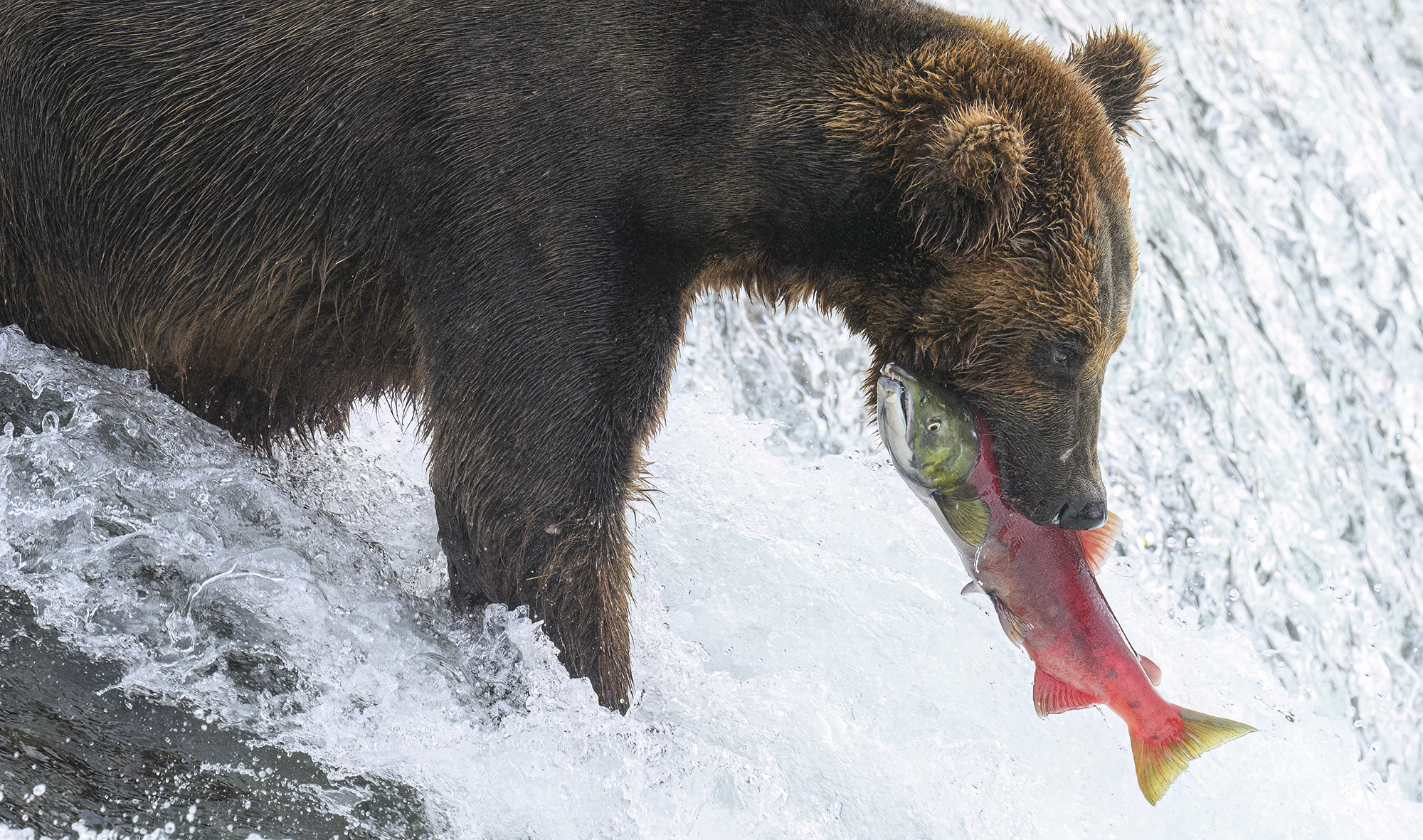
Brooks Falls in Katmai National Park, Alaska is widely considered one of the best places in the world to observe and photograph brown bears fishing for salmon. In 1988, renowned wildlife photographer Thomas D. Mangelsen took an unprecedented image of a salmon leaping right into the mouth of a brown bear standing atop this waterfall. For the last 35 years, wildlife photographers and enthusiasts from around the world have been inspired by Mangelsen’s “Catch of the Day”, making their own pilgrimage to Brooks Falls to witness and capture the natural beauty of brown bears fishing at the falls.
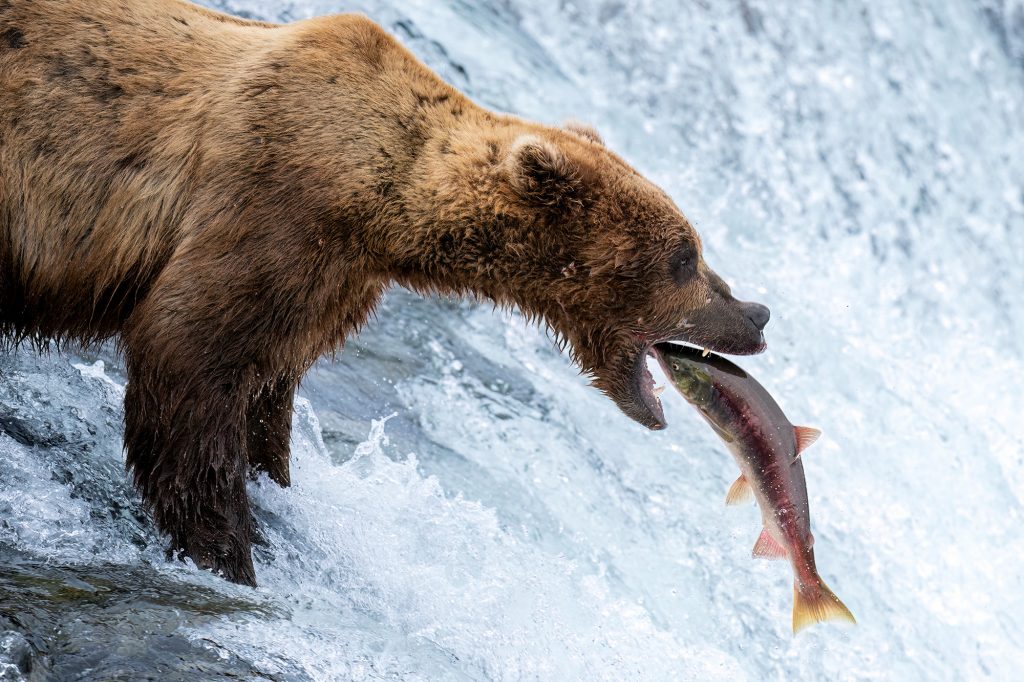
Brown bears congregate in large numbers at the Brooks River during summer months to fish for salmon returning to spawn in the lake and streams above. Here, Brooks Falls creates a bottleneck in the river for migrating salmon, which the brown bears have learned is the perfect place to fish.
Timing of the peak salmon run is variable each year but typically late June and July are the best months for the greatest chance of witnessing the bears fishing at the top of the falls. In the course of my 5-day trip, the behavior of the salmon and bears varied widely. Some days the falls would look like salmon popcorn with many bears quickly filling up and slumbering off into the woods for a nap. On other days with less fish jumping, the bears would patiently wait for extended periods of time and catch only a few salmon.
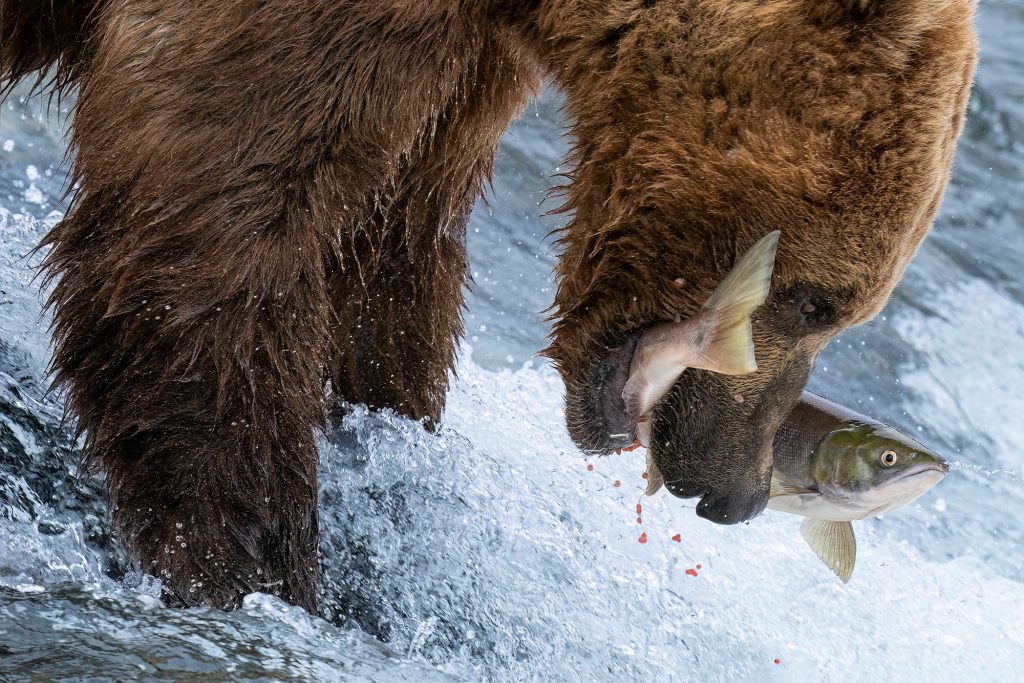
Many visitors come to the Brooks River just for the day to watch the bears fishing at the falls; they depart several hours later after one or two bear-viewing sessions on the platform. The main platform has a limited capacity, which means there can be a lengthy midday wait during peak season.
If you want to maximize your opportunity to take the best photos, I would recommend staying several nights, either at the Brooks Lodge or in the campground. This requires advance planning but gives you more opportunities to take photos from the platforms during the ironically less crowded times of day with the best light. It also gives you time to explore other areas around Brooks Camp for different photo opportunities.
Beyond the Falls Platforms
Though less iconic than the falls, the surrounding half-mile stretch of river between Naknek Lake and Brooks Lake hosts a high density of bears with different fishing strategies making for other interesting photo opportunities. The lower river and beach of Brooks Lake are also frequented by bears and offer a variety of backgrounds and photo opportunities in addition to the viewing platforms.
If you are interested in taking eye-level photos of the bears, consider hiring a photography guide through Brooks Lodge or applying for an NPS Brooks River Corridor Permit. The Katmai Trading Post has waders available for rental.
With so many bears around, you never know where your best photo opportunity of the trip might pop up.
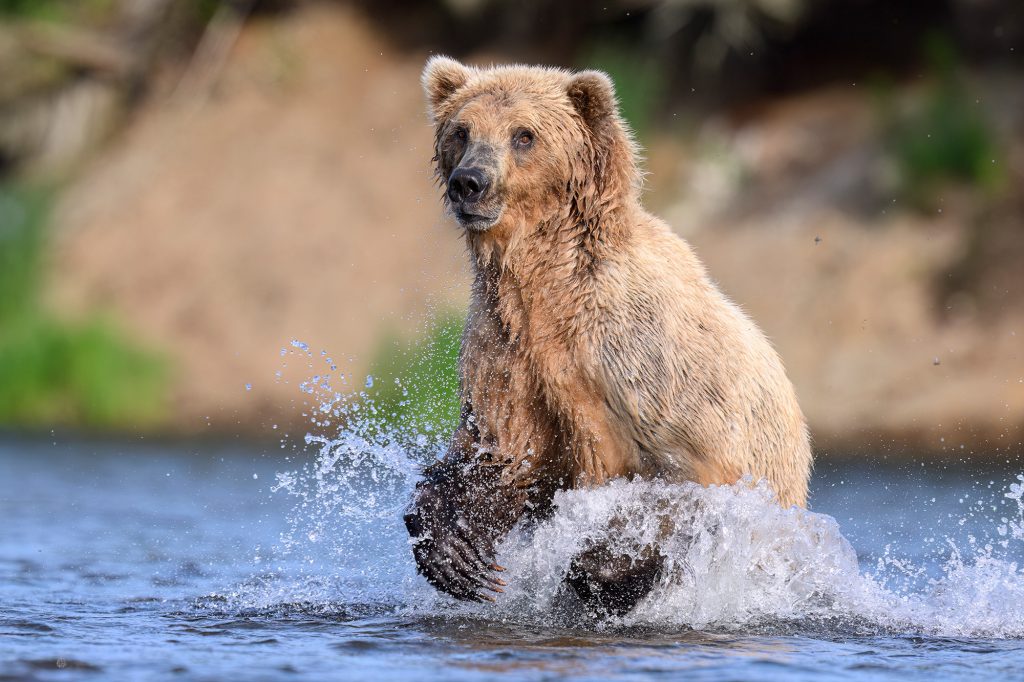
Equipment
In Mangelsen’s course, “The Art of Wildlife Photography” on CreativeLive he describes some of the technical aspects of taking his iconic image on a 2 frame-per-second (FPS) film camera in 1988. Capturing your own version of Mangelsen’s classic image still takes patience and persistence but fortunately, camera technologies have advanced significantly since then making it much more achievable.
Current mirrorless cameras from most manufacturers allow you to capture RAW images at 20-30 FPS, greatly increasing your odds of getting a shot with a fish perfectly framed in a bear’s mouth. I recommend taking a camera that can capture RAW images at least 10 FPS – luckily even mid-range mirrorless cameras from most manufacturers can do this. As a Nikon shooter, I choose to take the 20 FPS capable Nikon Z9 as my primary camera and a 14 FPS capable Nikon Z6II as my backup.
Tripods are no longer allowed on the platform due to the large number of visitors. A sturdy monopod combined with lens and body stabilization is sufficient. To freeze the motion of the jumping fish, I would recommend shooting at a shutter speed of at least 1/1000 second. I would not recommend hand-holding your camera because your arms will eventually fatigue even with lighter lenses. Inevitably, the fish will jump right into the bear’s mouth when you take a moment to rest your arms. A monopod can also be useful for slowing down your exposure speed to try to capture the motion of the water flowing by.
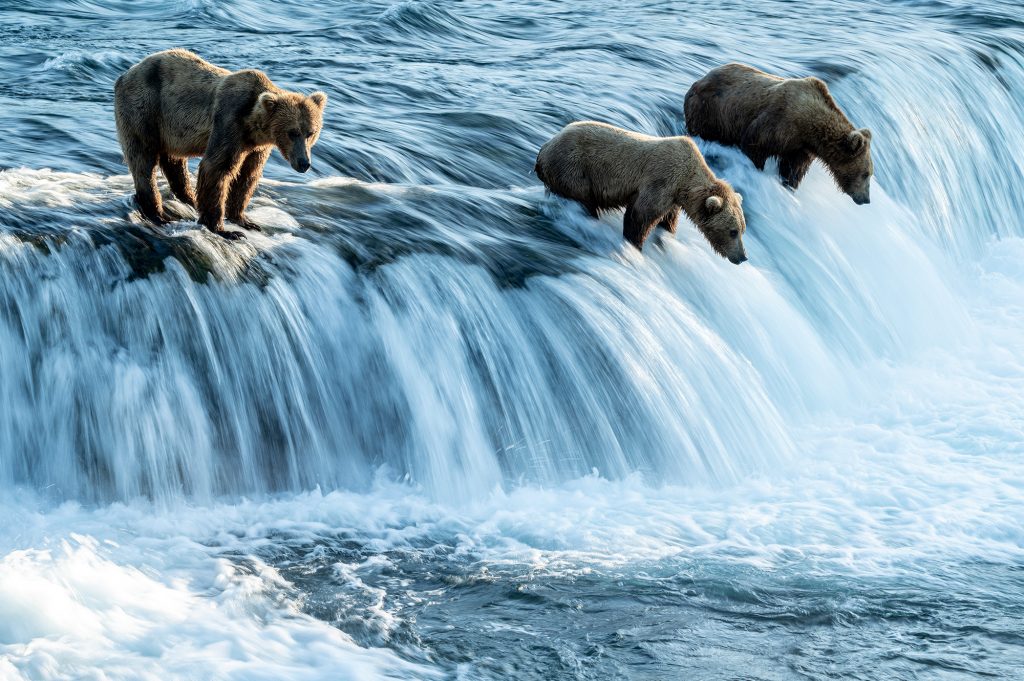
Focal length and composition are personal artistic choices. While preparing for my trip I came across countless forum discussions about which lenses to take to Brooks Falls. To help you choose the lenses that you will take to Brooks Falls, I have cropped a high-resolution image taken at 100mm from the Falls Platform to approximate the field of view of various focal lengths you might consider bringing.
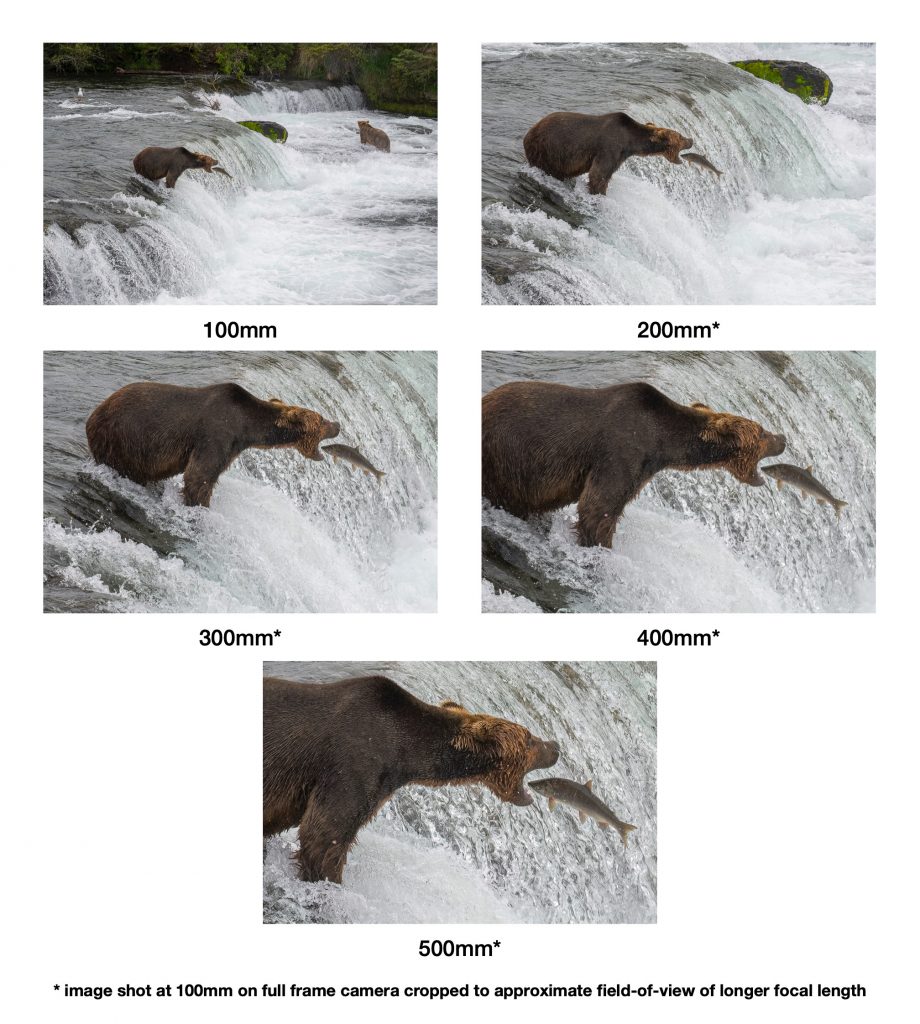
The primary lens I took on the trip was a Nikon 400mm f/2.8E for the sharpest possible head and shoulders shots of bears fishing at the falls. Using it combined with a 1.4x or 2.0x teleconverter gave me longer focal lengths to maintain safe distances when photographing bears in other areas at Brooks Camp. If available, the new Nikon Z 400mm f/2.8 TC would have been a great choice as well. Additionally, I took a Nikon Z 100-400mm f/4.5-5.6 for wider shots and different compositions. Lighter, more flexible zoom lenses such as this are a great option for those looking to travel lighter. Those arriving by float plane will have luggage weight restrictions, although it is possible to pay for extra weight. I personally found little use for my Nikon 24-120mm f/4 lens, though it could be a good choice if there were many bears congregating below the falls.
High-resolution cameras give you the flexibility to select a slightly wider focal length lens and crop for the final composition while maintaining sufficient resolution for most image uses, including large prints.
Though not necessary for photographing bears catching jumping salmon, the new advanced animal detection autofocus (AF) modes grab right onto the eyes of the bears making focusing very straightforward. Using back button AF activation can help ensure that your camera doesn’t accidentally refocus at a critical moment. Animal detection AF was very useful when photographing bears in locations other than the platforms. I found even in backlight and darker conditions it still quickly locked onto the eyes of the bears with very few mistakes.
Bring plenty of camera batteries, while it is possible for those spending multiple days at Brooks Camp to recharge batteries in Brooks Lodge, I would plan on having at least a few batteries per day for your camera.

Final Thoughts
Being able to coexist in close proximity with this density of brown bears is what makes Katmai National Park so special and unique. If you are lucky enough to visit Brooks Falls remember what you learn during your arrival orientation and be respectful of park rangers so we can all continue enjoying these amazing bears!
For many, visiting Brooks Falls is a once-in-a-lifetime opportunity, and though we no longer have to wait for our film to be developed, most of us will not see our photos in great detail until we are home. High frame rate RAW capture will increase the number of keepers and animal-detection autofocus with fast lenses will help ensure your favorite images are tack sharp. Your trip to Brooks Falls is the perfect opportunity to rent the latest camera body or that expensive telephoto lens that you just can’t justify owning.
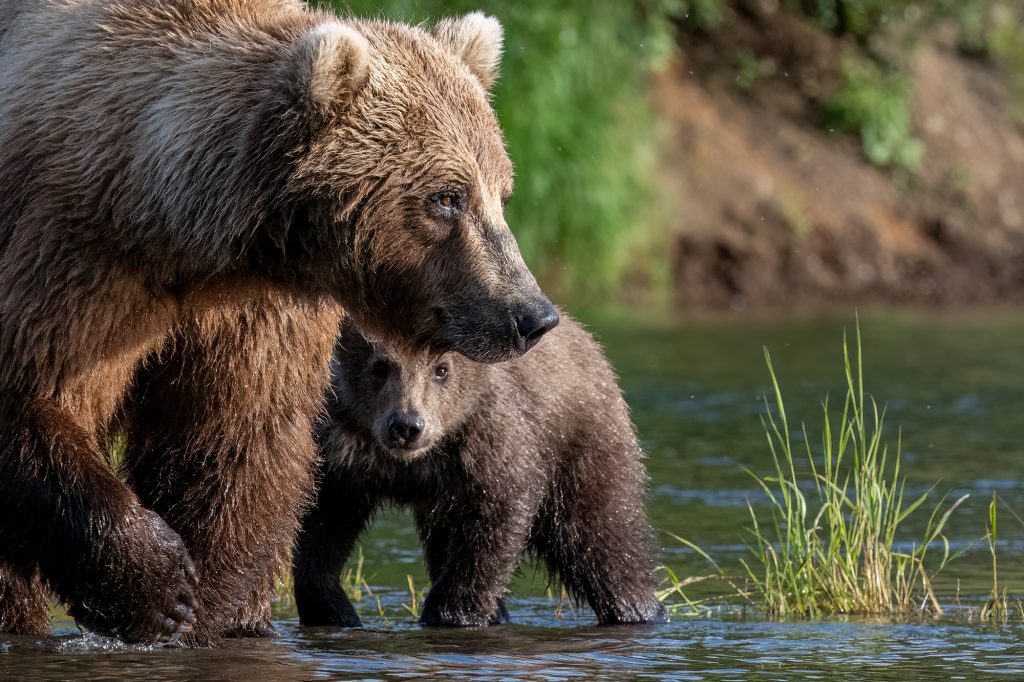
Related Reading
- A Guide on What to Bring for a Landscape Photography Excursion
- Female-Focused Nexus Looks to Push the Bounds of What to Expect in a Ski Documentary
- A Comprehensive Guide to Aerial Photography
- Customer Stories – Photographing the SpaceX Falcon Major Launch
